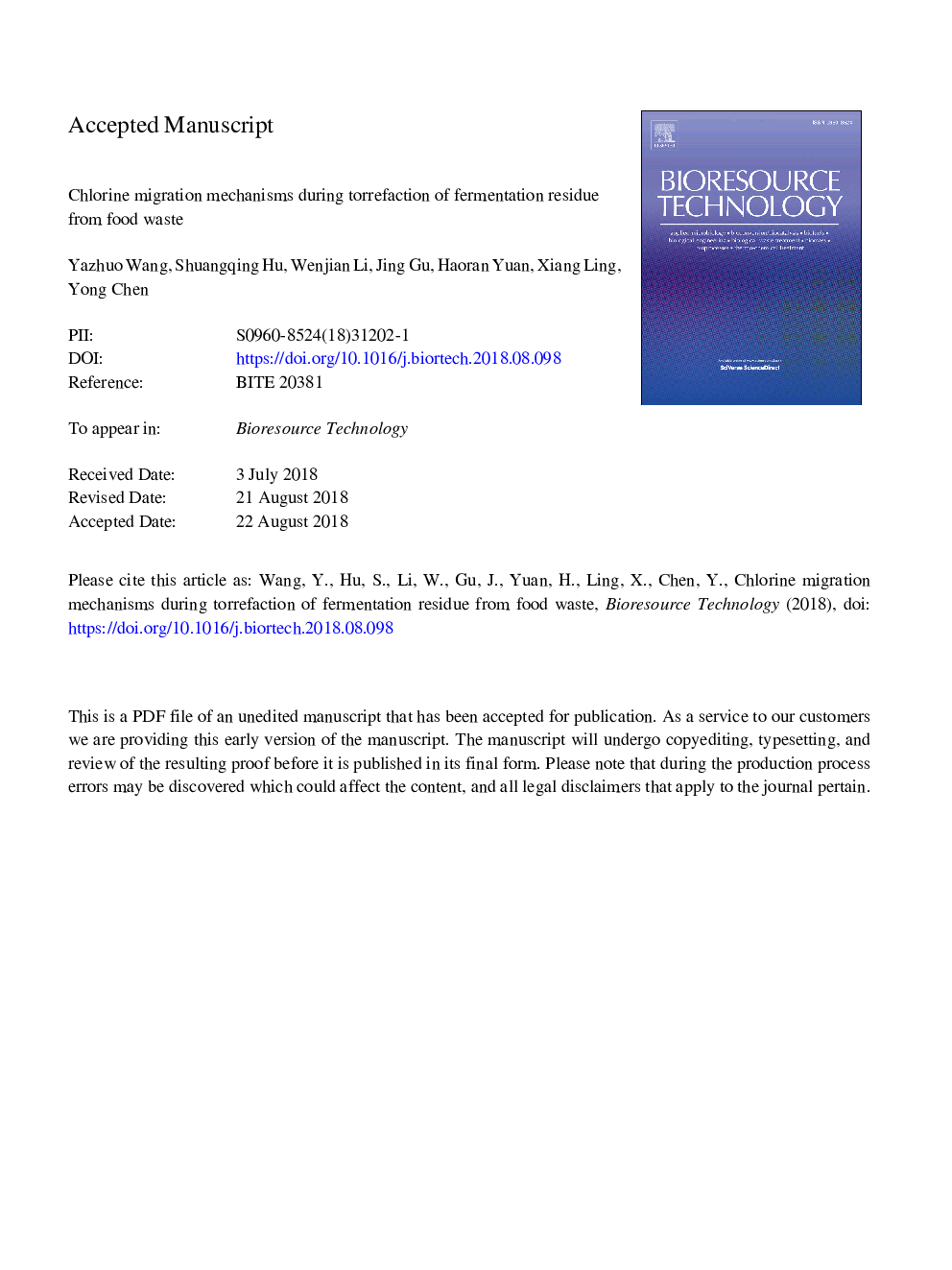| Article ID | Journal | Published Year | Pages | File Type |
|---|---|---|---|---|
| 10226167 | Bioresource Technology | 2019 | 29 Pages |
Abstract
Fermentation residue from food waster (FRFW) has a large amount of residual chlorine (Cl), and the high-salt of FRFW is either landfilled or treated as a fertilizer. The transfer of chlorine to the atmosphere and soil can cause pollution and soil salinization. This work primarily investigated the combined forms and migration mechanisms of Cl during the torrefaction of FRFW from 250 to 400â¯Â°C. The results showed that the form and amount of Cl released during the torrefaction of FRFW depended on temperature. The absolute content of soluble Cl and total Cl in torrefied solid products decreased, and the absolute content of insoluble Cl reached a maximum at 350â¯Â°C, which indicated that some soluble Cl was transferred to the insoluble Cl (CCl forms). The Cl-containing products in non-condensable gas was too little to be detected, so the majority of the reduced Cl was in liquids with different organic compounds.
Keywords
Related Topics
Physical Sciences and Engineering
Chemical Engineering
Process Chemistry and Technology
Authors
Yazhuo Wang, Shuangqing Hu, Wenjian Li, Jing Gu, Haoran Yuan, Xiang Ling, Yong Chen,
